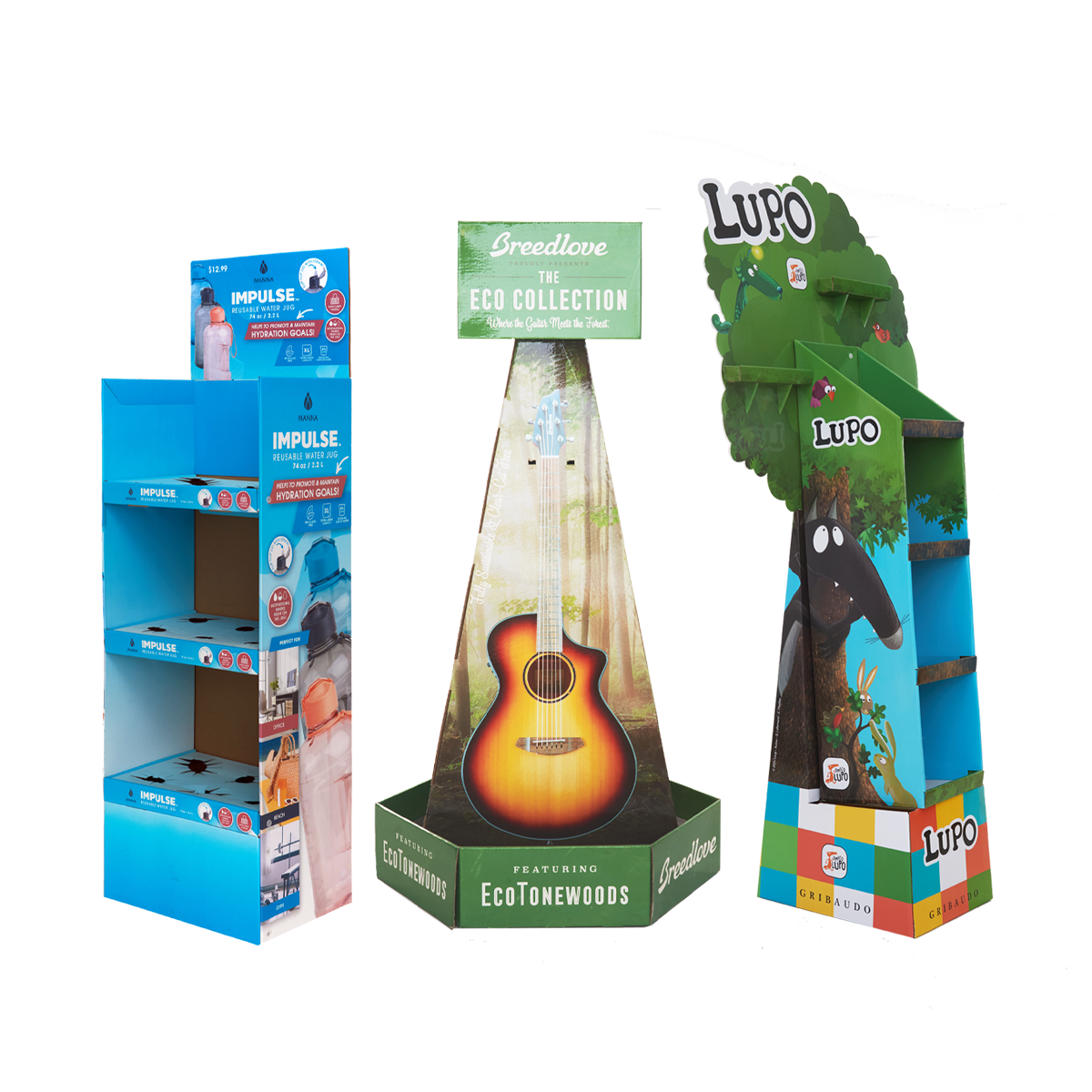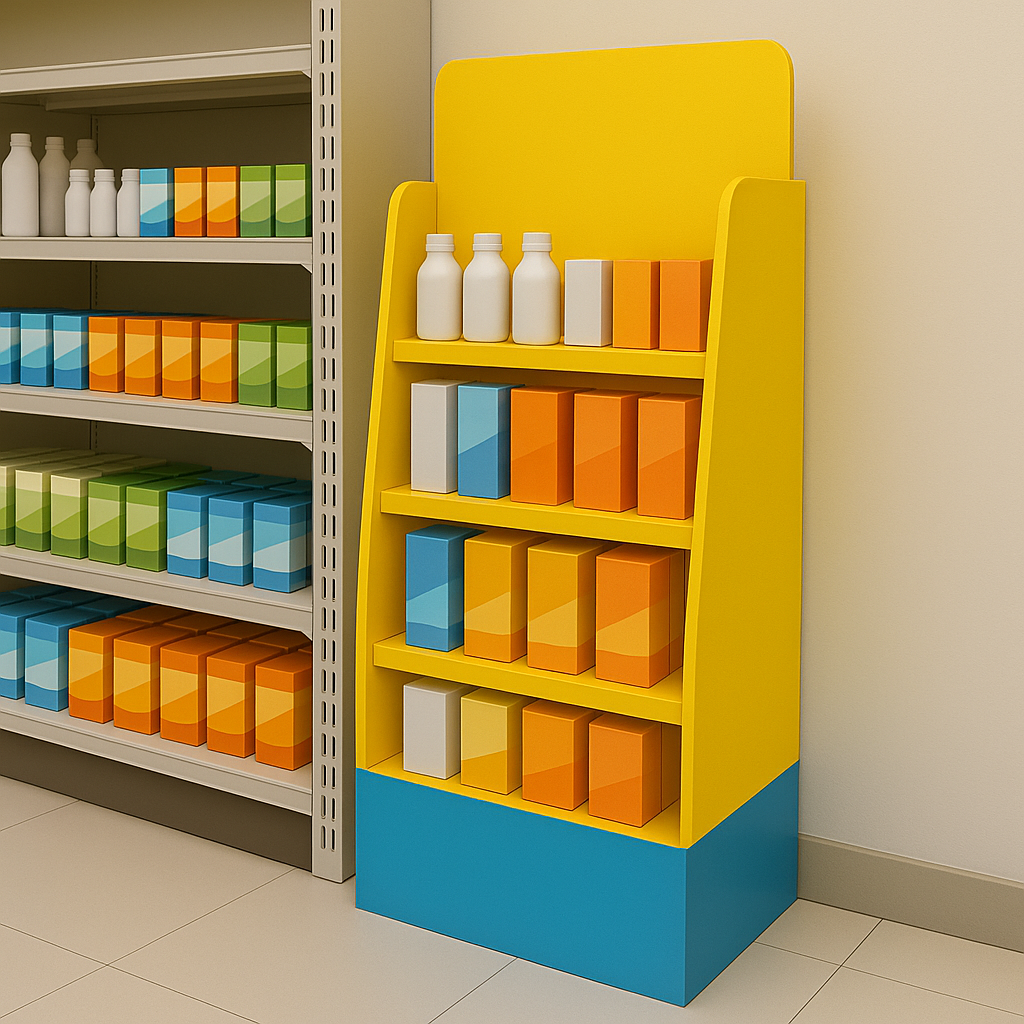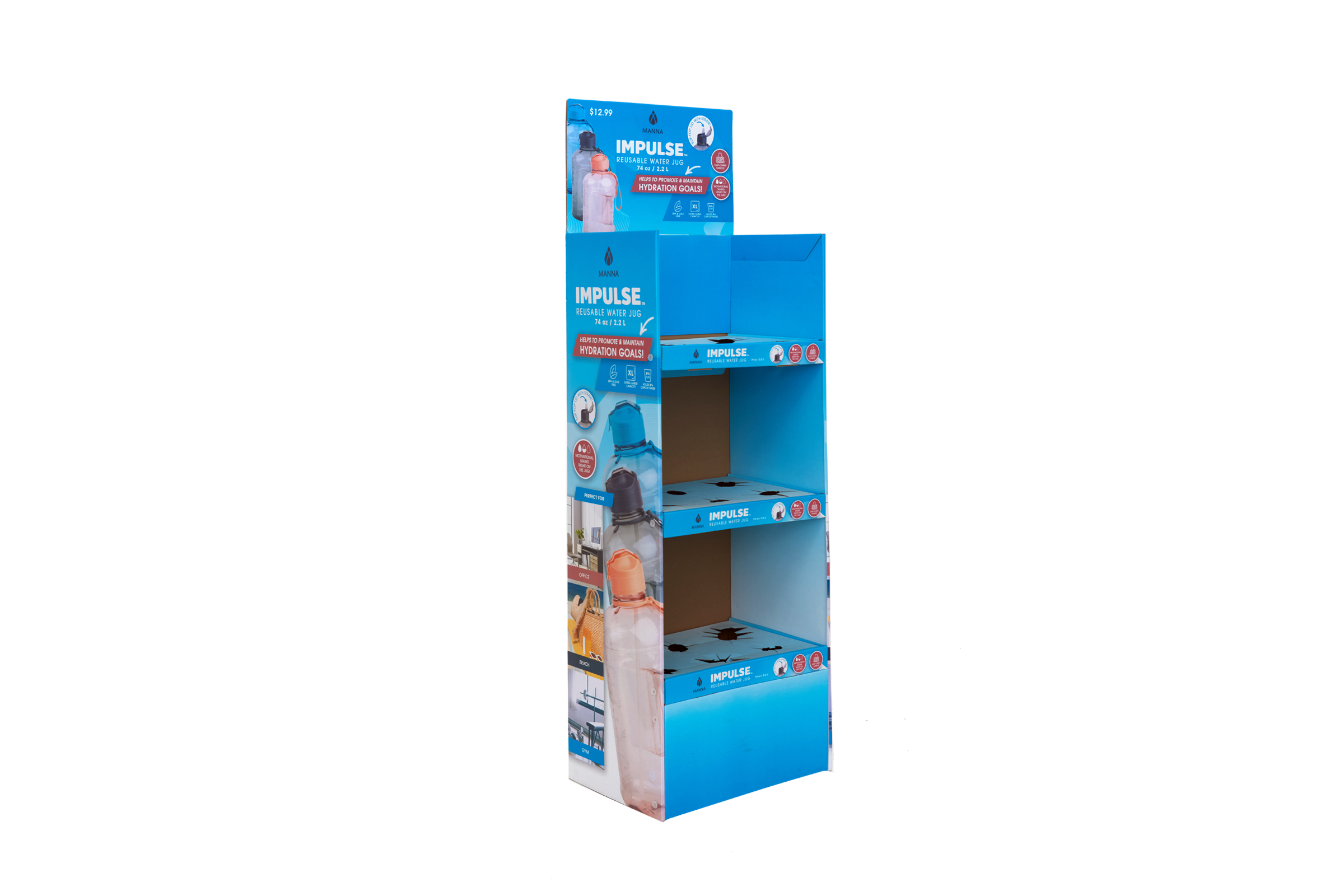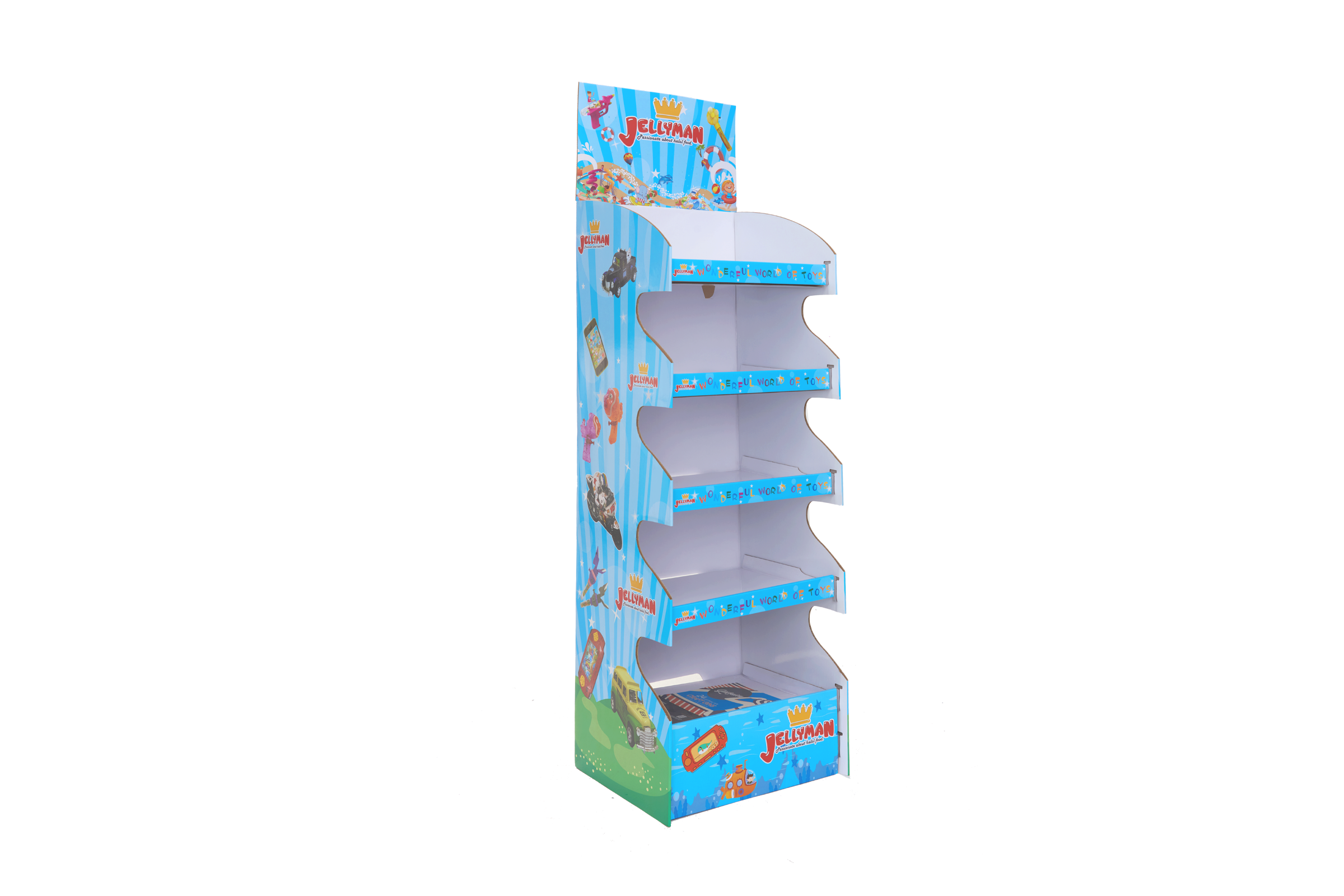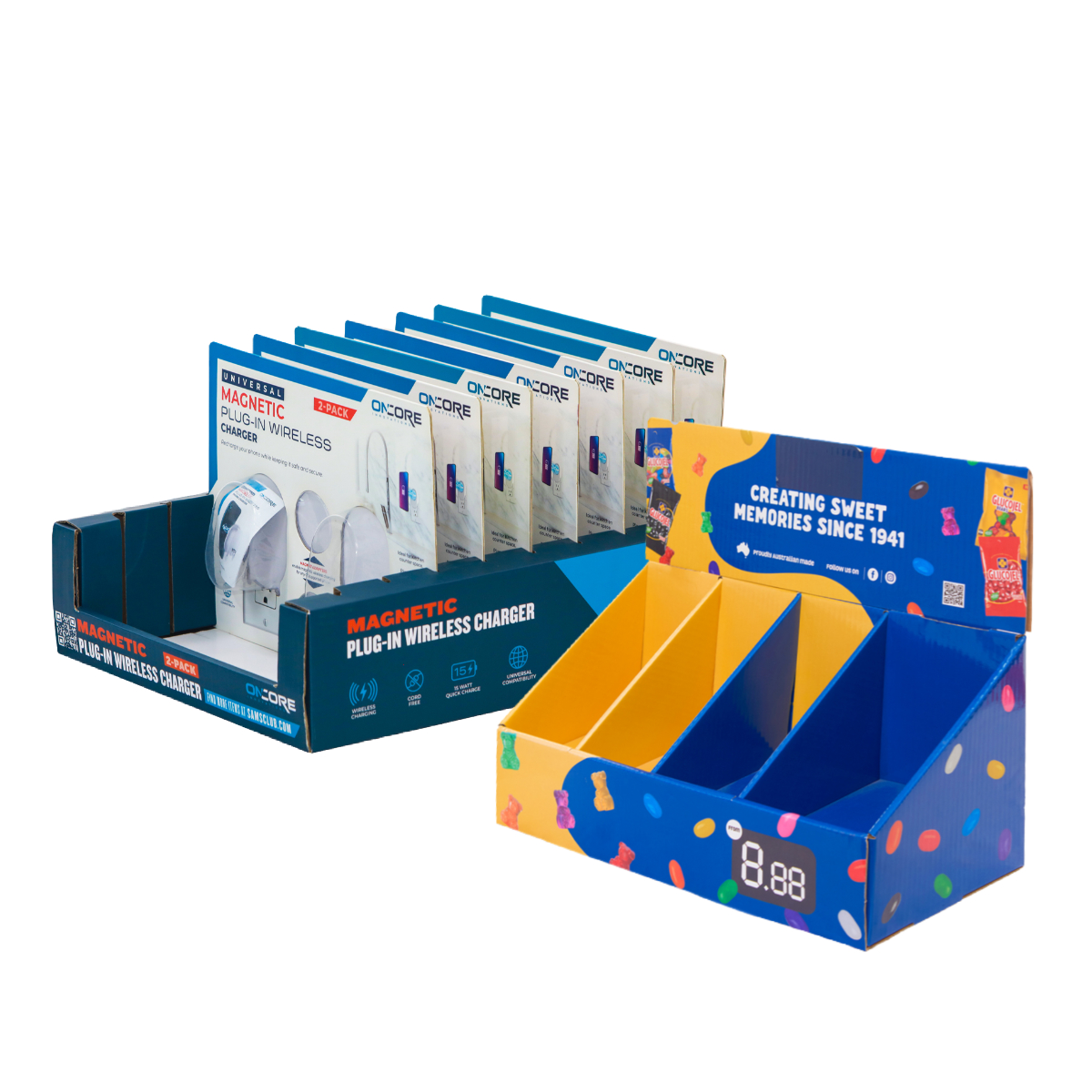
Understanding PDQ Displays: What They Mean and Why Retailers Use Them
Learn what PDQ displays are, how they speed up merchandising, organize small products and support sustainable, paper based in store branding.
Back to blogs
Walk into any supermarket, convenience store or pharmacy and you will see small branded trays and boxes near the checkout or on busy shelves. Many of these are PDQ displays. The term appears often in packaging and visual merchandising conversations, but its meaning is not always clear for every brand team.
In simple terms, a PDQ display is a ready to use paper display that arrives at the store packed with products and can be placed on the shelf or counter with very little effort. It sits at the point where packaging, logistics and merchandising meet.
This article explains what PDQ displays are, how they relate to shelf ready packaging and why retailers rely on this format. It also looks at how paper based PDQ units fit within a broader sustainable display strategy.
What PDQ Means in Retail and Packaging
PDQ is widely understood as an abbreviation for Pretty Darn Quick. In retail practice, it refers to a display unit that is quick to set up on the sales floor. A typical PDQ display is a small tray or box made from corrugated board or folding carton. It is usually pre packed with products before it leaves the factory.
When the outer shipping carton is opened in the store, staff do not need to unpack every single item. They simply remove or fold back the top cover and place the full PDQ unit onto a counter, shelf or promotional area. The result is a neat, branded presentation with minimal handling.
Because a PDQ unit can travel through the supply chain and then act as a display on arrival, it often sits between secondary packaging and small format display stand.
PDQ Displays and Shelf Ready Packaging
PDQ displays are often mentioned together with shelf ready packaging, and there is some overlap between the two. Both formats aim to make stocking and replenishment easier. However, their primary focus is slightly different.
Shelf ready packaging is designed so that store staff can open the outer carton and place the contents on the shelf quickly. The key objective is efficiency. Product presentation matters, but the structure is still close to a shipping case.
A PDQ display is closer to a small display stand. It supports efficient stocking, but it also pays more attention to layout, branding and shopper visibility. For example, a PDQ tray for one ounce bottles will hold each bottle upright, show labels clearly and provide a printed graphic panel for the brand.
In many supermarkets, you will see PDQ units:
- On gondola shelves in the main aisle
- Near the front of an end cap display
- By the checkout area for impulse purchases
In these locations, the PDQ unit does more than hold stock. It frames the products, groups them and makes the offer easier to understand at a glance.
Why Retailers Use PDQ Displays
Retailers do not adopt PDQ displays only because they look neat. There are several practical benefits that explain their popularity.
1. Faster merchandising
Because PDQ displays are designed to be ready for the shelf or counter, staff can move them from shipping carton to sales floor in a short time. This is helpful in high volume environments where labor time is closely managed.
2. Consistent product presentation
A PDQ unit keeps products aligned and facing forward. For small items such as mini bottles, sachets, trial size cosmetics or confectionery, this helps shoppers see the offer clearly. It also makes it easier to check stock levels and refill when necessary.
3. Better use of limited space
Counter tops, checkout zones and crowded shelves all have limited room. A compact PDQ display defines a clear footprint for a product range. The brand does not have to compete only on a flat shelf surface and can claim a more fixed portion of space.
4. Extra branding surface
PDQ displays are made from printable paperboard. Brands can use full color CMYK artwork or specific Pantone colors to match their packaging. Side walls, front lips and back panels all become communication surfaces for logos, product information or campaign visuals.
5. Alignment with sustainability goals
Many retailers and brand owners are working toward more sustainable in store materials. Paper based PDQ units can be produced from recyclable or responsibly sourced board and can replace mixed material displays that are harder to handle after use.
PDQ Displays in Visual Merchandising
From a visual merchandising perspective, PDQ displays are flexible building blocks. They can work alone on a counter or become part of a larger layout that includes end cap displays, hook displays and floor stands.
A few common applications include:
- Small PDQ trays for one ounce bottles placed near related full size products
- Themed PDQ displays for seasonal promotions such as gifting, travel or back to school
- Coordinated PDQ units that repeat the same graphic language across different aisles
When PDQ displays use the same color palette, typography and imagery as folding cartons and primary packaging, the result is a coherent brand story that follows the shopper through the store.
How Paper Based PDQ Displays Fit Into a Larger System
For many brands, a PDQ display is not an isolated item. It is part of a system that includes:
- Primary packaging such as bottles, jars or sachets
- Folding cartons or secondary packaging that group units for sale
- Shelf ready packaging for bulk replenishment
- Counter displays, hook displays and end cap structures
Paper based PDQ units connect these layers. They are light enough for efficient shipping, strong enough for retail use and printable enough to support clear branding.
For example, a brand that sells one ounce trial bottles might use:
- A folding carton for e commerce or wholesale
- A PDQ display for pharmacy counters
- A small hook display for convenience stores
- A coordinated end cap feature for supermarket promotions
Because the structures share the same material family and similar graphics, the shopper can recognize the brand quickly in different retail formats.
Conclusion
PDQ displays are an established part of modern retail, but their value goes beyond quick setup. They help retailers and brand owners bring products from the supply chain to the shopper in a way that is efficient, organized and visually clear.
When designed in paper based materials, PDQ units also support broader goals around sustainable merchandising. For brands that want to link packaging, logistics and visual merchandising into one thoughtful system, a well structured PDQ display is a practical place to start.
Useful Links:
- What is a PDQ display
A clear introduction to PDQ units, their structure and how they support quick setup in store. - Shelf ready packaging explained
An overview of shelf ready packaging and how it works together with PDQ displays on supermarket shelves. - Corrugated paper packaging and sustainability
Background information on why paper based materials are widely used for eco focused retail displays.
Latest Posts
All Posts


